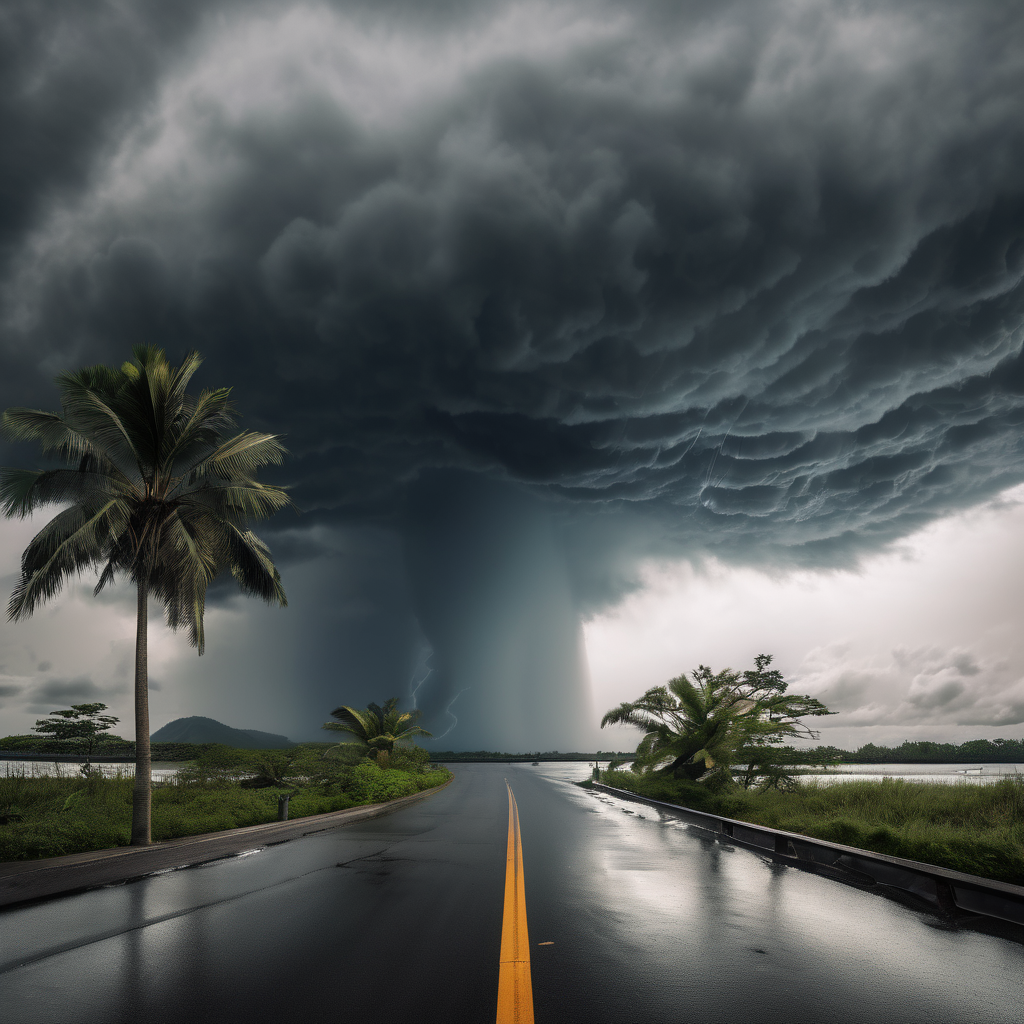Typhoon Fung-wong has struck the northern region of the Philippines, causing significant destruction overnight and resulting in at least two fatalities. As residents began to assess the aftermath on Monday morning, many towns remained cut off due to the severe conditions.
Prior to the typhoon’s landfall on Sunday night in Dinalungan, Aurora province, over one million individuals were evacuated to safety. The typhoon, which packed fierce winds, heavy rains, and storm swells, created alarming conditions across the country’s main island of Luzon. Reports indicate that the succumbing winds caused extensive damage in areas such as Santiago City in Isabela province, where uprooted tree branches and toppled electric posts were common sights.
Residents described a harrowing night navigating the storm’s fury. “We could not sleep last night because of the winds hitting our metal sheets and the tree branches falling,” recounted Romeo Mariano, who sheltered with his grandmother. As dawn broke, the reality of the damage was evident with fallen tree branches littering their yard.
According to the Civil Defence office, the death toll stands at two, with two additional injuries reported. Aurora province’s vice-governor, Patrick Alexis Angara, noted that landslides and broken roads rendered at least three towns inaccessible. “Assessment and clearing operations are underway,” Angara told local media as officials mobilized resources.
While the typhoon has moved over the South China Sea and is projected to shift northeast toward Taiwan, the potential for heavy rains and strong winds continues, particularly affecting coastal areas. This ongoing threat has led to the cancellation of over 400 flights since Sunday as civil aviation authorities remain vigilant.
The impact of Typhoon Fung-wong underscores the fragility of the region, which is frequently battered by severe weather events. Despite the devastation, community spirit and emergency management practices are critical in ensuring recovery. As Filipinos rally to assist one another in the aftermath of the storm, there remains a hopeful outlook for rebuilding and resilience in the face of future natural disasters.
